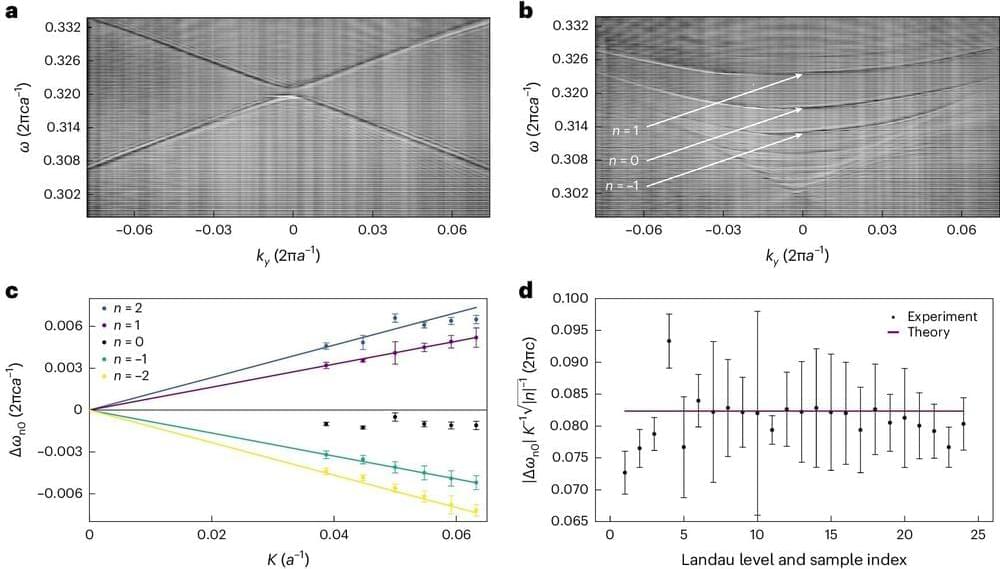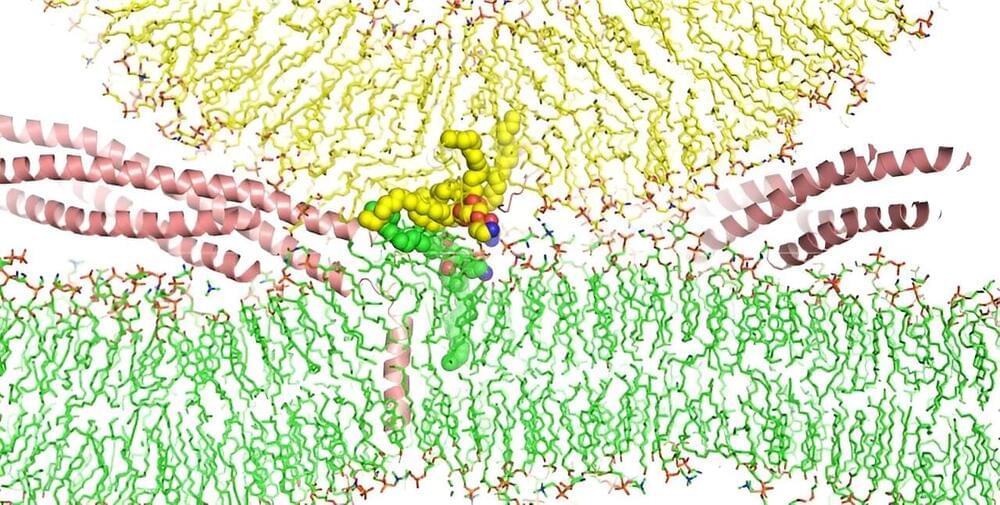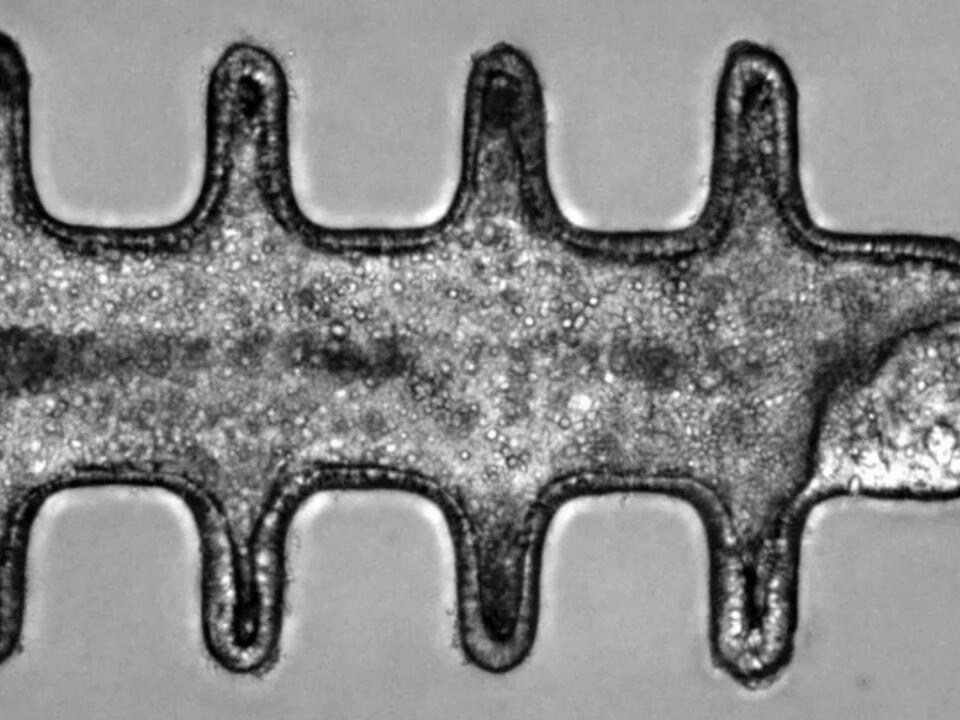Unlike electrons, particles of light are uncharged, so they do not respond to magnetic fields. Despite this, researchers have now experimentally made light effectively “feel” a magnetic field within a complicated structure called a photonic crystal, which is made of silicon and glass.
Within the crystal, the light spins in circles and the researchers observed, for the first time, that it forms discrete energy bands called Landau levels, which parallels a well-known phenomenon seen in electrons.
This finding could point to new ways to increase the interaction of light with matter, an advance that has the potential to improve photonic technologies, like very small lasers.









